Mrs Prada and me: why Theaster Gates has joined forces with fashion
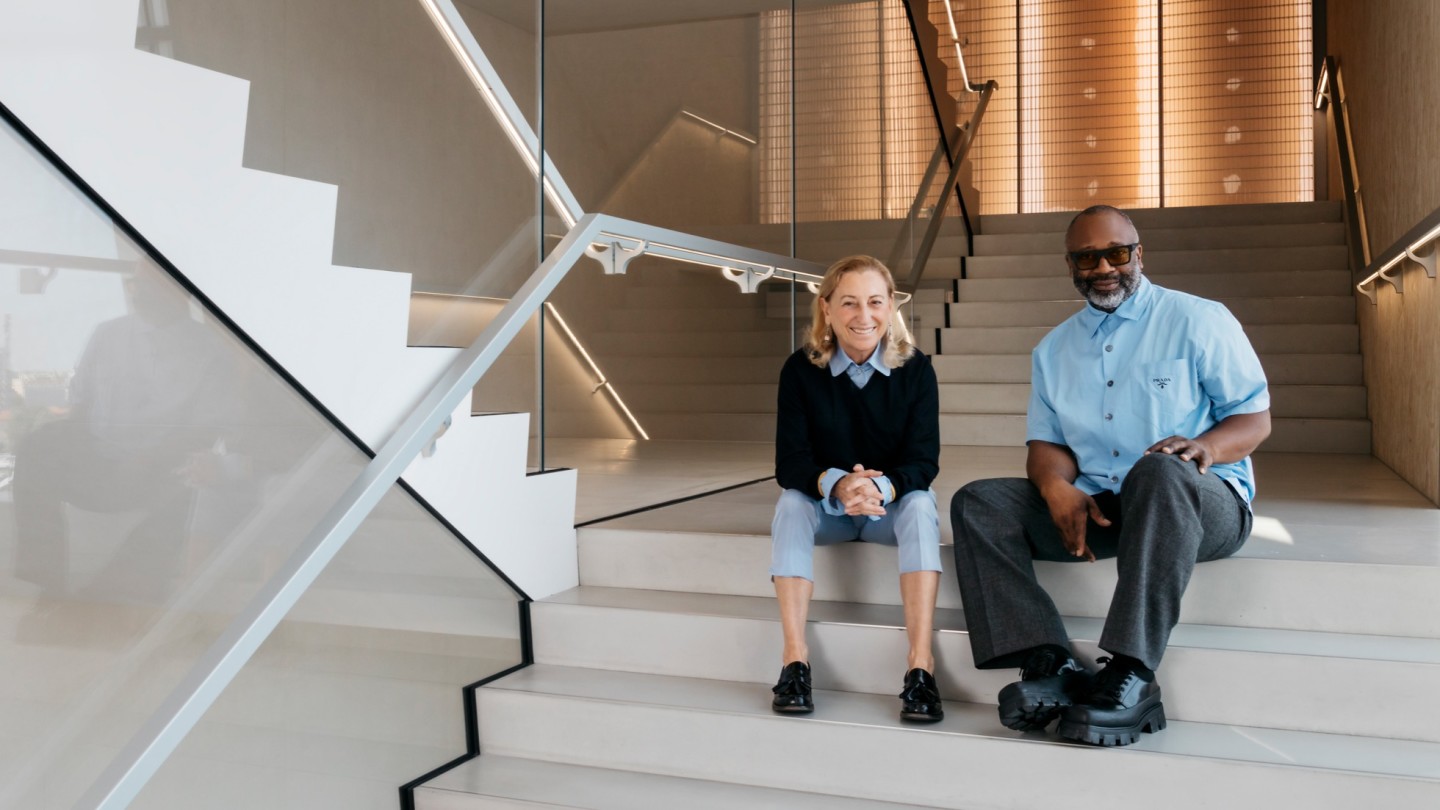
Simply sign up to the Style myFT Digest -- delivered directly to your inbox.
First impressions can be deceptive. When Miuccia Prada initially encountered Theaster Gates at the jazz club Ronnie Scott’s in London, Gates was performing on stage with his band The Black Monks. “I thought, my God! He looks so intimidating and unreachable,” says the co-chief executive officer and co-creative director of Italian fashion house Prada, who is also the creative director of Miu Miu. Gates, a multidisciplinary artist whose oeuvre spans sculpture, performance, installation, space theory and land development, laughs at the memory: “We had been rehearsing so much I had lost my voice. I was concentrating on making sure the notes that came out were good.”
That was in 2012, and Gates had just opened his first European solo show at The Arts Club. The exhibition included works from his In the Event of a Race Riot series – where decommissioned fire hoses act as symbols of the 1968 civil rights demonstrations in Chicago, when hoses were used for crowd control.
Ten years later, Prada and Gates are the best of friends and collaborators – in the summer they celebrated the first European gathering for Dorchester Industries Experimental Design Lab: a Prada Group-funded initiative with Gates’s Rebuild Foundation. The Lab is a three-year programme that aims to support and amplify the work of artists and designers of colour, investing in their development and exposing them to organisations interested in working with diverse talent, including the Prada brand itself.
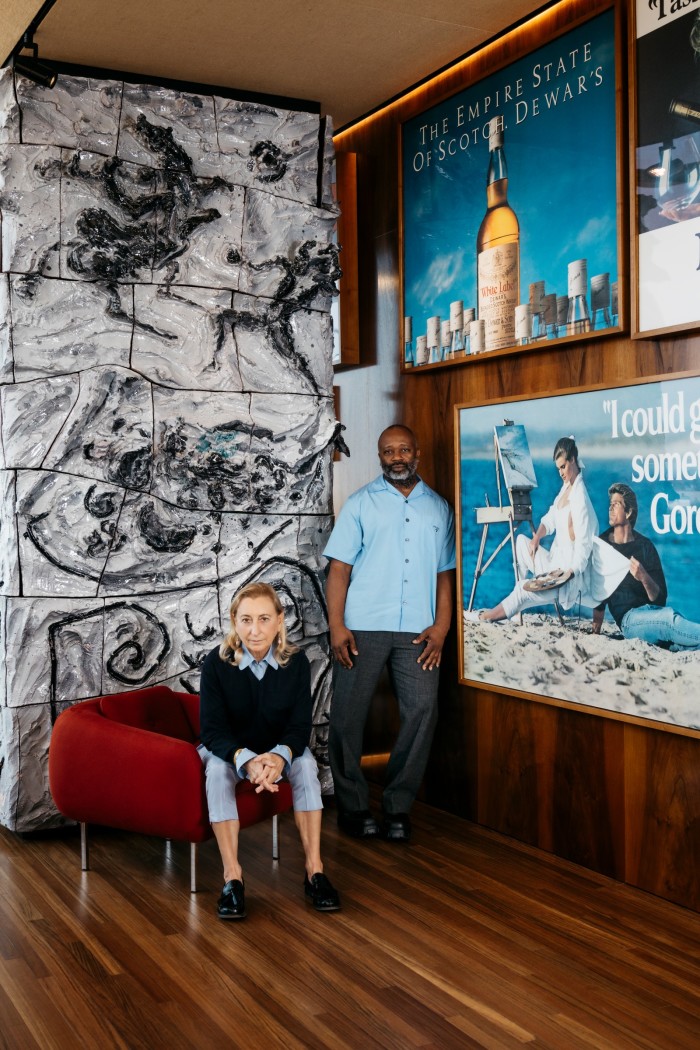
Both wearing Prada’s signature Celeste Blue, seated in Ristorante Torre at the Fondazione Prada in Milan with sweeping views over the city, the pair converse intensely about the role of art in society, the joy of hard work and their quest to combat social injustice and racism. “There are moments that made us say: maybe we could do more,” says Gates, who in 2019 was invited by Prada to co-chair the Prada Group’s newly formed Diversity & Inclusion Advisory Council. Prada nods her head in agreement. “Money and scholarship are not enough. I said, why don’t we do something that offers more possibilities? That offers more opportunities to black people, to women, and to do something useful – and so Theaster invented the Experimental Design Lab,” she says.
Together they are working hard to create a platform that puts real meat on the bones of Prada Group’s inclusivity initiative. “I would prefer to do nothing than merely offer a declaration to show that we are ‘good’,” Prada says passionately. Gates agrees. “It’s not just dealing with racism but understanding that beautiful things – intelligence, savvy, skill and talent – can come from all over the world,” he adds. To this end, those joining the Experimental Design Lab will benefit from the fashion icon’s and artist’s professional, industrial and creative networks. In turn, the Prada Group will benefit from being opened up to different expertise and diverse points of view.
There are 14 designers and artists in the first cohort, who were invited to Milan on a two-day retreat full of presentations, activities and meetings. For many, it was their first trip to Italy and their first encounter with Miuccia. One of the highlights was being offered front-row seats at the menswear catwalk show where Prada and Raf Simons pushed the boundaries of fashion in a collection that examined the archetypes of menswear – from cowboy boots to trenchcoats and jeans – watched by actors such as Jeff Goldblum, Damson Idris and Rami Malek.
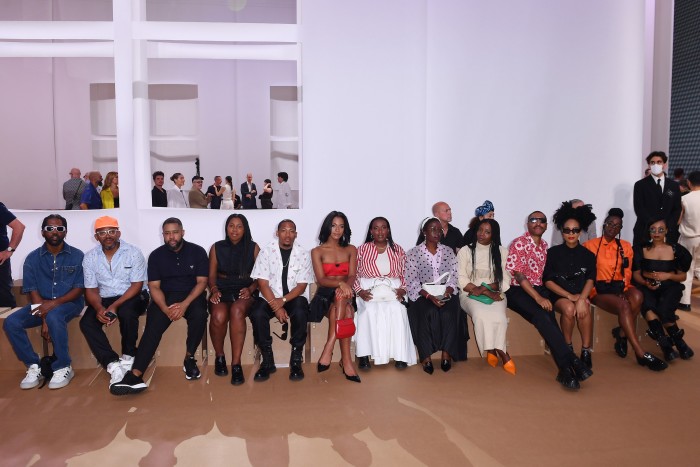
The group (the majority of whom live in the US) were selected from 200 candidates nominated by a panel that included the late Virgil Abloh, writer and filmmaker Ava DuVernay and architect David Adjaye. The collective spans a huge variety of disciplines and ages: from product designer Norman Teague and hydroponics expert Yemi Amu to the architect Maya Bird-Murphy, the dancer/choreographer Kyle Abraham, and Kenturah Davis, a visual artist. In the fashion camp, Tolu Coker, Catherine Sarr and shoe designer Kendall Reynolds all head up their own brands.
“Miuccia was not only concerned about diversity around fashion,” says Gates. “She said, ‘I don’t care what the form or the artistic intervention is as long as it is about thinking.’ I tried to shape a programme that is aware and created a cohort that would benefit from the resources, the platform and from knowing each other – it’s from there that good things can happen.”
“There are few people like Theaster. He’s a great artist but he also cares about people in everything he does,” says Prada of Gates’s talent and sense of civic commitment. He is equally in awe of Prada as a figure who has fundamentally changed the way we think about dress and the art of fashion.
“My interest in art is founded in my interest in politics, as I come from a political background [Prada has a PhD in political science from the University of Milan]. So when I find a person that supports this, I am happy. An institution can display beautiful art, but I try to do something more. Art is always political,” says Prada, who is chief curator and co-president of the Fondazione Prada with her husband Patrizio Bertelli. “Theaster creates art that pushes other points of view, raises issues and promotes understanding of what is happening at this moment in time – and I’m fixated on this.”
The double act has formed a strong bond over the past decade, which was ignited when the Fondazione Prada invited Gates to create the exhibition True Value, an exploration of economies of labour using reclaimed material. Gates, now 49, the son of a roofer who lived on Chicago’s West Side, is a firm believer in the integrity of labour and making. To help galvanise Gates’s show, Prada introduced him to an octogenarian female hardware store owner in Milan who had served rations from the shop in the postwar period.
“For me, an artist can choose to solve any number of problems. Your problem could be the choice of the colour red, but there are other problems you could solve, such as ‘I wish more people had housing in my neighbourhood’. I am trying to give voice to things I care about and that make the world political. I’m invested in beautiful forms but not beautiful forms without purpose,” adds Gates, who designed the Serpentine Pavilion 2022 as the monumental Black Chapel. The Black Monks band will perform at this space in October. Gates is also preparing for a solo show opening at the New Museum of Contemporary Art in New York titled Young Lords and Their Traces in honour of the radical thinkers who have shaped his home city of Chicago – and America as a whole.
The Experimental Design Lab grew out of a mission to place inclusivity at the heart of creativity. “Race and inclusion are my primary job but I am also committed to the bigger picture. For example, how do you then make diversity important but also think about the issues of water and our food? I’m starting at equity and inclusion, and I hope to connect that to environmental thoughtfulness. I also think black artists – designers of colour – should not only know black art; we should know all art, design and fashion,” explains Gates.
While Prada honed her skills in fashion working for her family’s luggage brand and carving out a unique vision, Gates’s ambition and aptitude were cemented while working as the senior transit arts planner for the Chicago Transit Authority. There, he was responsible for a project that involved commissioning and curating $70mn worth of artworks across the urban network. What connects him and Prada is a sense of civic duty and a belief in the power of creative synergy to shape culture.
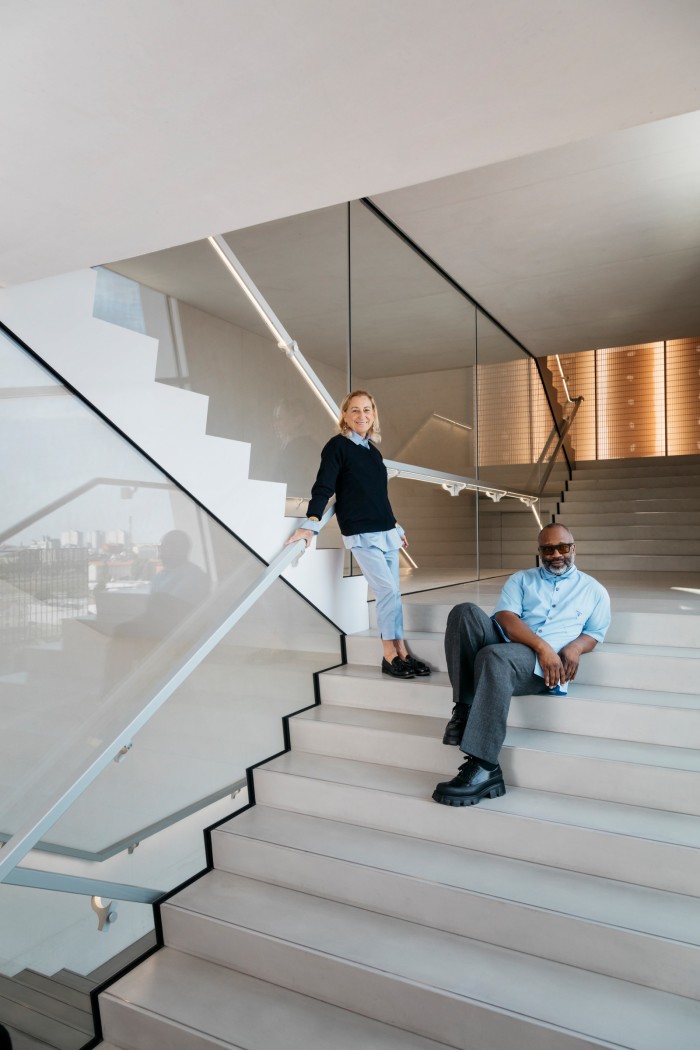
On setting up as an artist, Gates also began investing in the restoration of dilapidated and dormant buildings in Chicago’s South Side – currently numbering 36. “The hope, ultimately, is to create a cultural neighbourhood – a hub,” says Gates of the properties, some of which he runs as the ReBuild Foundation. The enterprise is funded by his own money, private donations and public fundraising. “What I learnt from being an artist is to not be too slick – to learn in public. Let people see it happen over time so they recognise how much hard work it is. We try to keep it raw, to keep learning. I am not a professional developer and the architecture is homemade, but this has its own charm,” he explains. In a similar way, the experimental nature of the Fondazione Prada opens a window on the brand and its ethos at a time when luxury houses can appear to operate behind closed doors. “We do not have donors,” Prada says, smiling. “I always say we should be happy that I make money with bags so we can continue to be independent – in that sense we are privileged.”
In the midsummer light, sipping on margaritas, the duo share a complicity that goes beyond language. They are thrilled to be in each other’s company again. “I want to shadow you in the office and see what happens in a day,” says Gates, beaming. Prada lets him down gently. “I think you will be surprised. I do nothing that designers typically do – like sketching or working on a mannequin – I sit and think!”
The pair keep in touch regularly. “I feel like Miuccia is one of a few people who I can call. She is someone who works harder than me – and I need her input. She helps me to set a bar that is high,” says Gates, remarking on the dedication it takes to run a company. But the Experimental Design Lab is not a project the pair have to do; rather they are compelled to act and help others. “We are the son of a roofer, the daughter of a luggage maker. Work is built into us – and the beautiful thing about work is that if something is not working, you work to make it work,” says Gates. Prada smiles in agreement. “Lucky are the ones that love their job. It is my instrument, and I want to use it the best way I can.”
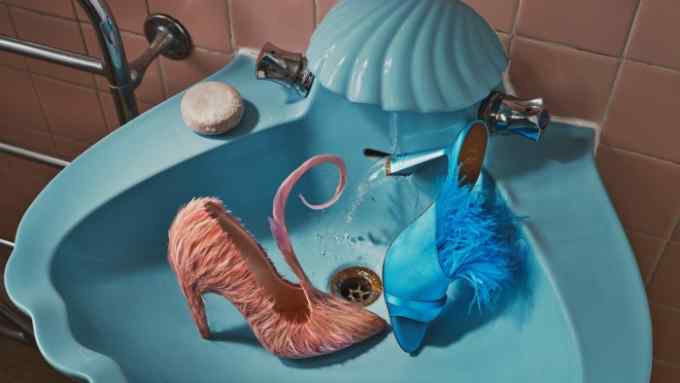
Comments